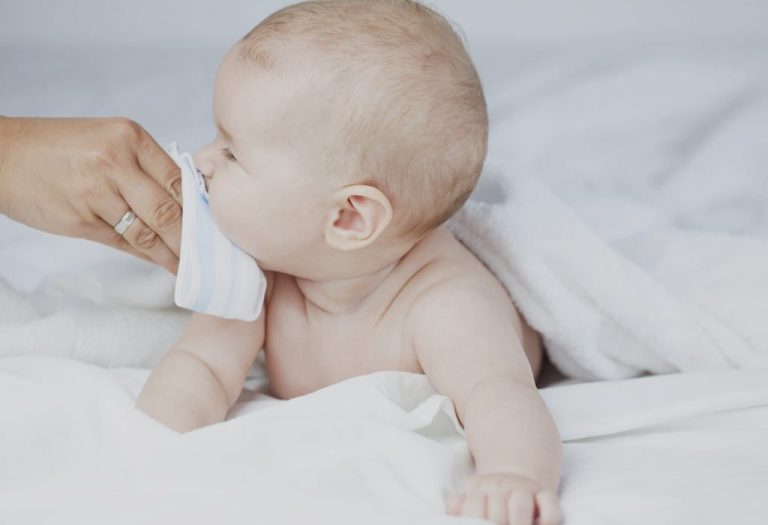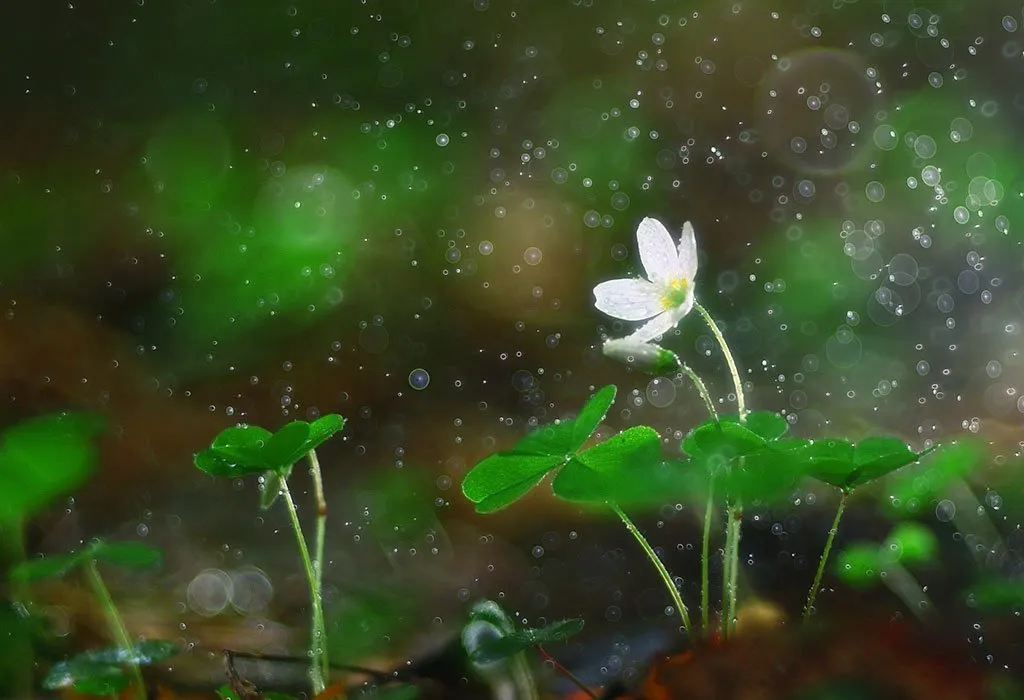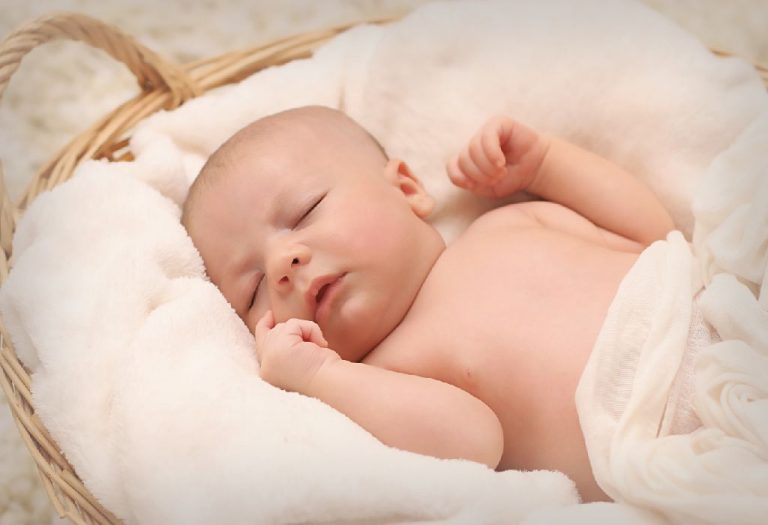Seasonal Allergies in Babies and Toddlers – Causes & Treatment
With a baby slowly adapting to the new life, parents often wonder, ‘Can my baby have seasonal allergies early in life?’. Seasonal allergies in babies & toddlers can occur, though they are less common in very young children. At times, there have been instances where seasonal allergies have been observed in infants that are just a couple of years old, but most of them start showing reactions only after they grow up to be in school or so (1). Factors like family history, environment, and exposure to allergens can influence the likelihood of developing allergies. While it’s rare for babies under one year to experience seasonal allergies, it’s not impossible, and parents should remain vigilant for symptoms.
Can Infants Have Seasonal Allergies?
Although it is possible for babies to suffer from allergies, their root cause is rarely due to the inhalation of triggering substances. Allergic reactions usually stem from various foods or conditions, such as eczema or asthma, based on the medical susceptibility of the family.
What Age Can Babies Get Seasonal Allergies?
Children typically begin to experience seasonal allergies between the ages of 3 and 5, with the majority showing noticeable symptoms by the age of 10 (2). While it’s less common, some children may develop allergies as early as 1 or 2 years old, though these reactions are often triggered by indoor allergens such as dust, mold, or pet dander rather than seasonal factors.
Causes of Seasonal Allergies in Babies and Toddlers
Seasonal allergies in toddlers are observed for a variety of reasons. These depend extensively on the surrounding areas and the numerous aspects that influence them. The presence of certain natural factors during specific seasons in such areas can make allergies more evident (3).
1. Allergies Due to Weed Pollen
These allergies are usually observed once the summer starts waning away, and the monsoons might be arriving within a few weeks. This time is ripe for the growth of various plants belonging to the family of weeds, such as nettle, ragweed, and most others. Since these can grow pretty easily in any condition, their pollens spread extensively and might trigger allergies in children when they inhale them.
2. Allergies Due to Grass Pollen
Grass pollen allergies are majorly seen in the times when the initial summer months are starting out, with spring being at the point of coming to an end. Varieties of grasses like orchard, rye and many others pollinate majorly in this period. However, there are always scenarios where your child could suffer from grass pollen allergies at any point in time since many other varieties keep pollinating throughout the year.
3. Allergies Due to Tree Pollen
Tree pollen allergies are some of the most common ones and are usually observed around the initial months of any year. At times, the wintry months of January and February can make these intense, while many tree allergies begin quite into the summer. Trees such as pine or cedar are the major ones that make it happen.
Signs and Symptoms of Seasonal Allergies in Babies and Toddlers
Seasonal have similar signs and symptoms as that of mild allergies of any kind. There are breathing issues as well as a semblance of a cough or cold symptoms, which can easily be misconstrued. Some of the major ones are (4):
- A pain inside the ear
- A throat that’s constantly sore
- Headaches that keep repeating
- Breathing difficulties
- A constant sense of tiredness, accompanied by broken sleep
- Itchiness and light rashes on the skin
- An itching sensation in the mouth, especially the roof
- Eyes that keep watering, itching, and are often swollen
- A nose that is quite congested, itchy, and even runny
Difference Between an Allergy and Cold in Babies and Toddlers
Since the seasonal allergy symptoms in infants are quite similar to any kid suffering from a cold, it can difficult to tell them apart. Sneezing, runny nose, headache and watery eyes are the tell-tale signs for both of them. But allergic reactions usually fade away in a few hours. If these symptoms last longer, they could indicate a cold.
Can Your Child Have Fever Along With Allergy?
You might observe your child to have an allergic reaction, as well as find his body to have a warmer temperature than usual. It is not uncommon for fever and an allergic reaction to show up at the same time. But, one is not responsible for the other and they are both independent of each other. Symptoms such as a runny nose or aching of the throat and high fever, can mean that it may not be an allergic reaction but a cold infection or so.
Testing of Seasonal Allergies in Babies and Toddlers
If you notice your child having allergic reactions frequently, it might help you in testing your kid and figuring out what allergies he might have. Testing babies for pollen allergies is uncommon, but an allergist can assess whether a blood test or skin prick test is needed.
In a blood test, a healthcare professional draws blood to measure antibody levels against specific allergens, checking for elevated levels that indicate an allergic response.
Alternatively, a skin prick test uses a small, pointed metal tool coated with a solution containing a particular allergen. The tool gently pricks the baby’s arm or back, allowing the allergen to penetrate the skin’s surface. After 15 to 20 minutes, the allergist checks for reactions like hives, redness, swelling, or a rash, which indicate sensitivity to the allergen. This test helps identify whether the issue stems from outdoor allergens like pollen or indoor triggers such as pet dander, dust mites, or cockroach particles.
Both methods provide valuable insights into the baby’s potential allergies (5).
Preventive Measures and Treatment to Relieve Allergy Symptoms in Spring and Summer
Wondering how to treat seasonal allergies in babies? The best way to ensure infant seasonal allergy relief is to make sure the allergic reaction doesn’t occur in the first place. Prevention can keep your little one safe, and taking some extra measures during seasons when allergies are rampant can be in your best interests (6).
- Make sure that any pets at home are cleaned regularly, especially if they step outside often. This can reduce the chances of them bringing those pollens back home.
- Any lawns outside your home should be trimmed down and kept short so as to minimize the occurrence of grass pollen.
- Keep separate jackets or shoes for moving outside, and place them outside your home when you return.
- Certain times of specific seasons, such as early mornings of monsoons or evenings of early summer, have a natural tendency to contain a large number of pollen particles. Avoid stepping out during these times.
- If the presence of pollen seems to be substantially stronger in your area, make use of air-conditioners and install air filters to avoid pollen grains from entering your inner home atmosphere.
- Shower and change clothes after being outdoors to remove pollen from your skin and hair, preventing it from spreading inside your home.
- Consider using a saline nasal rinse to clear pollen particles from your nasal passages, providing relief from congestion and irritation.
Which Allergy Medicines Are Recommended for Babies and Toddlers
When it comes to seasonal allergies in babies, treatment methods usually focus on keeping the symptoms under control. Most of these medicines are available over the counter, while a few of them might be specifically prescribed by your doctor in case the symptoms seem to be skewed to the extreme side. These are majorly common antihistamines or corticosteroids that counteract the bodily processes causing the symptoms and reduce them substantially. Extreme conditions require the administration of strong anti-allergic injections, but infants are usually not given those.
Allergy Symptoms in Infants and Toddlers All Year Round
While many plant-related factors lead to allergies in specific seasons, there are certain sources that can cause allergies throughout the year. Some of these can be unavoidable but there are many precautions that can be taken to keep the symptoms as minimum as possible.
1. Allergies Due to Moulds
The challenging aspect about moulds is that they can grow pretty much in any area of your home. Spotting them quickly may be difficult since their growth can even exist in hidden corners that are out of your line of sight. Similar to pollen seeds, the spores of these moulds move through the air to spread around and result in allergies when inhaled. Areas that usually quite damp all the time are highly susceptible to mould growth.
Precautions to Take
- Ensure enough ventilation in all areas of your home, supported by a humidifier if necessary.
- Avoid keeping any wet objects or clothes around in a pile.
- Clean corners and other damp areas of your home regularly.
- Take a look around your home and check for mould growth close to your windows or doors.
2. Allergies Due to Dust
Most people believe they have an allergy to dust. But in India, dust is usually omnipresent and it doesn’t always end up in triggering an allergy. The reason is that the allergy is not due to dust, but due to the mites present in them. Extremely minuscule creatures that they are, these are absolutely harmless. But for those who are allergic, they can wreak havoc on your well-being. These allergies can be quite discomforting for little children and babies.
Precautions to Take
- Keep your little one’s room as free from dust as possible, and make use of damp cloths to clean the rooms.
- Don’t keep carpets or other sheets that end up holding dust.
- Clean any stuffed toys or soft objects on a daily basis to avoid a buildup of dust.
- If you stay in a dusty area, try to make use of air-filters for your baby’s room.
3. Allergies Due to Pets
`As much as your family and your kid might be in love with your pet, an unfortunate presence of allergy can make the entire experience an unwanted one. There are numerous aspects of a pet that might trigger the allergy. It could be the fur, it could be their saliva or even the dead skin that flakes off regularly. Some kids have been known to be allergic to pet birds as well.
Precautions to Take
- Keep direct contact between your kid and your pet to a minimum.
- Washing your pet once a week can reduce the chances of triggering allergies.
- Clean your sofas and furniture to get rid of any dried hair or skin from your pet.
- Although understandably difficult, it may be worth considering another pet as well.
FAQs
1. Do seasonal allergies cause diarrhea in babies?
Amongst various seasonal allergies symptoms in toddlers, parents wonder if diarrhoea should also be considered as one. However, diarrhoea is rarely an allergic reaction ever exhibited by the body. It occurs due to a disturbance in the gastric activity. Intake of certain medicines to counter the allergies could, in fact, disturb the gastrointestinal balance and cause diarrhoea though.
2. Can breastfeeding help prevent seasonal allergies in babies?
Breastfeeding may offer some protective benefits against allergies, as it supports the baby’s immune system. However, it’s not a guaranteed prevention method, and genetics or environmental factors still play a significant role in allergy development.
3. Do seasonal allergies make babies more fussy or irritable?
Infant seasonal allergies can cause discomfort, such as itchy eyes, nasal congestion, or a scratchy throat, which may make babies more fussy or irritable than usual. This behavior is often mistaken for teething or general crankiness.
When treating seasonal allergies in toddlers, mild anti-allergic medicines are usually the best way out there. Taking preventive measures can help reduce the chances of repetition and keep your little one healthy and happy.
References/Resources:
1. National Library of Medicine – Allergic Rhinitis in Childhood and the New EUFOREA Algorithm
2. Seattle Children’s Hospital – Hay Fever
3. Nemours Kids Health – Seasonal Allergies (Hay Fever)
4. American Academy of Pediatrics – Seasonal Allergies in Children
5. Cedars Sinai – Allergies in Children
6. Mayo Clinic – Seasonal allergies: Nip them in the bud
Also Read:
Baby Skin Allergy
Milk Allergy In Infants
Food Allergies in Babies
Home Remedies for Cold and Flu in Babies & Kids
Was This Article Helpful?
Parenting is a huge responsibility, for you as a caregiver, but also for us as a parenting content platform. We understand that and take our responsibility of creating credible content seriously. FirstCry Parenting articles are written and published only after extensive research using factually sound references to deliver quality content that is accurate, validated by experts, and completely reliable. To understand how we go about creating content that is credible, read our editorial policy here.
























